Exploring Rome
Fri Dec 01, 2017 11:29 amWe traveled by train from Florence back to Rome and immediately began exploring Circus Maximus, Basilica di San Giovanni in Laterano, Piazza Farnese, and Campo de' Fiori.
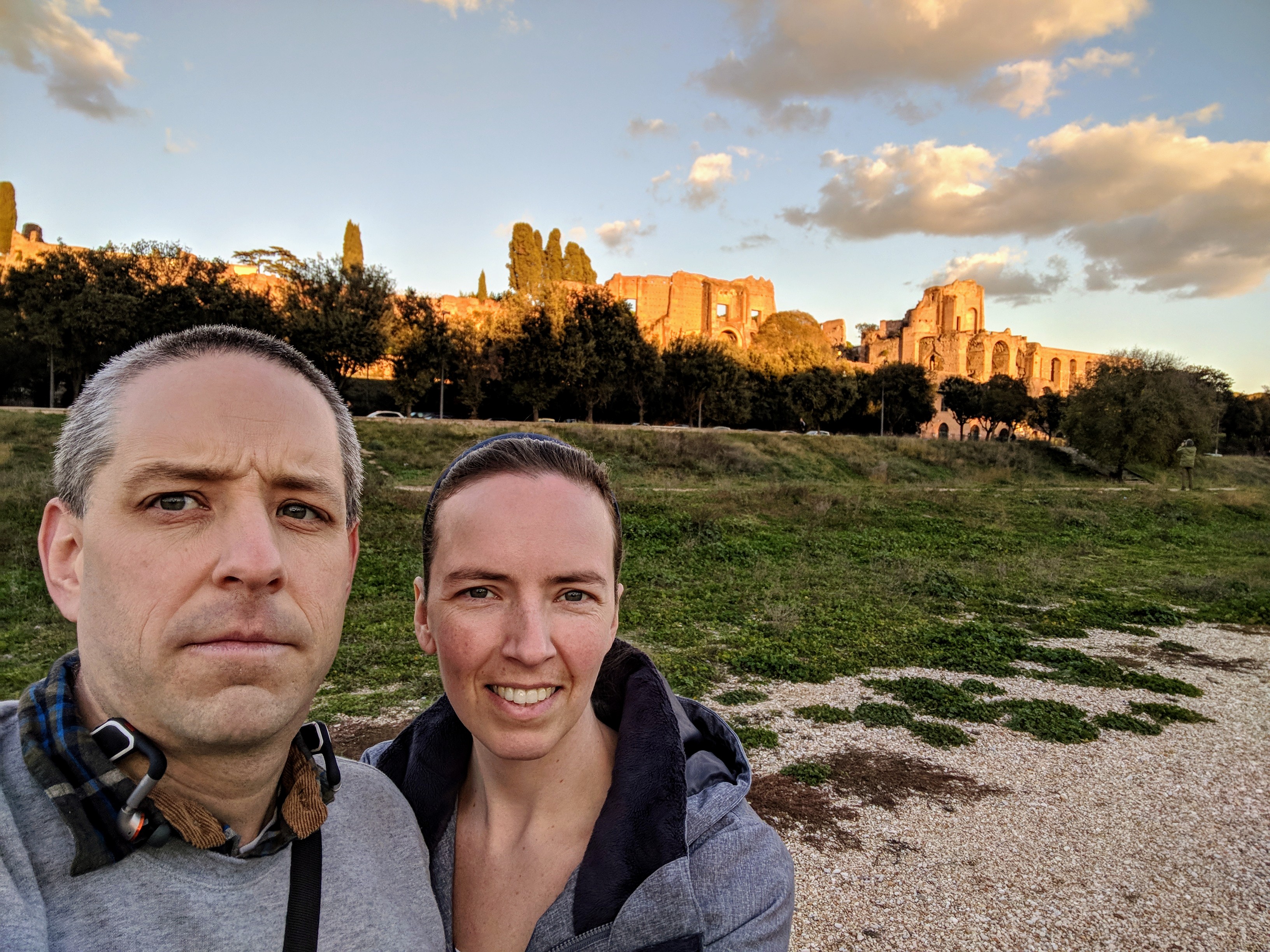
Standing in Circus Maximus, a 3000-year-old race track which could accommodate 150,000 spectators, is an amazing experience that just sends chills up and down your spine.
I believe the ruins above us are Domus Severiana which contained the Baths of Septimius Severus at the foot of Palatine Hill, which are just stunning in this angle of winter evening sunlight.
Palatine Hill is the Hill where Augustus built his Palace, and is according to some combination of Mythology and Archeology, the hill on which Rome was founded.
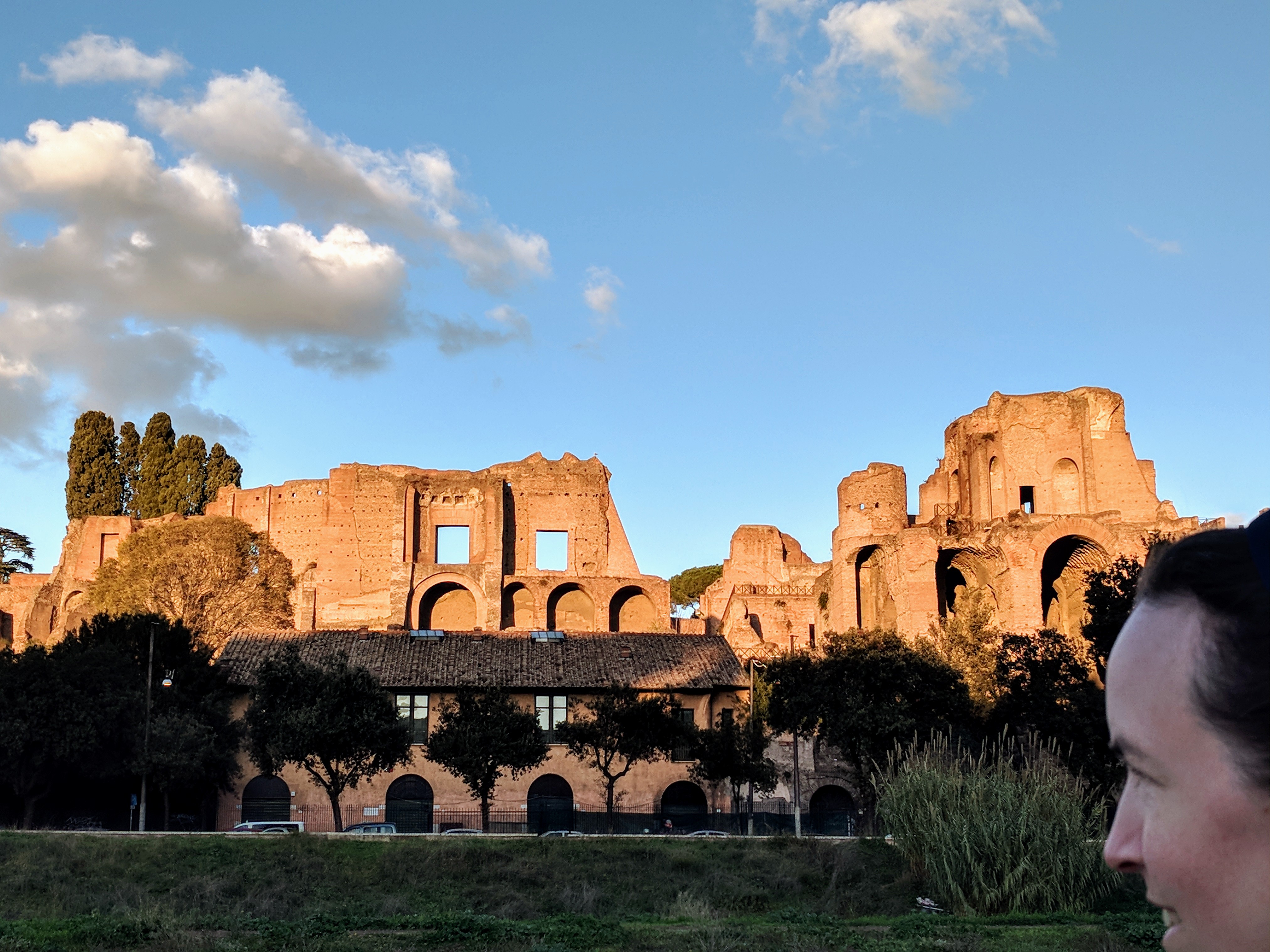
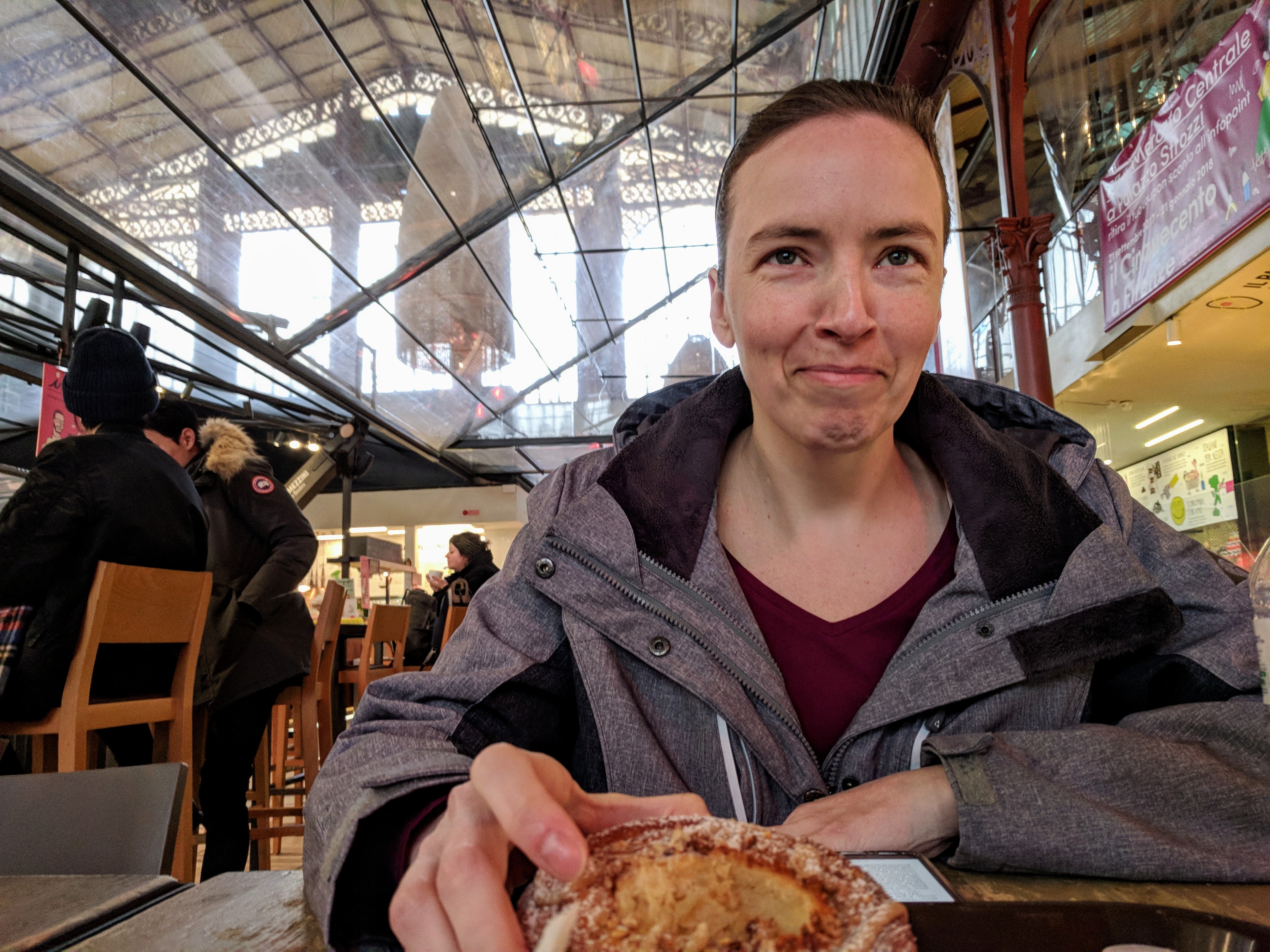
On our way to the Florence Train Station, we stopped at the historic Central Market to grab breakfast.
The key is to travel light. Everything goes into a single carry-on backpack suitcase. You sling it onto your back and go flying past all those dumb tourists trying to negotiate the cobble-stone with their giant wheeled monstrosities.
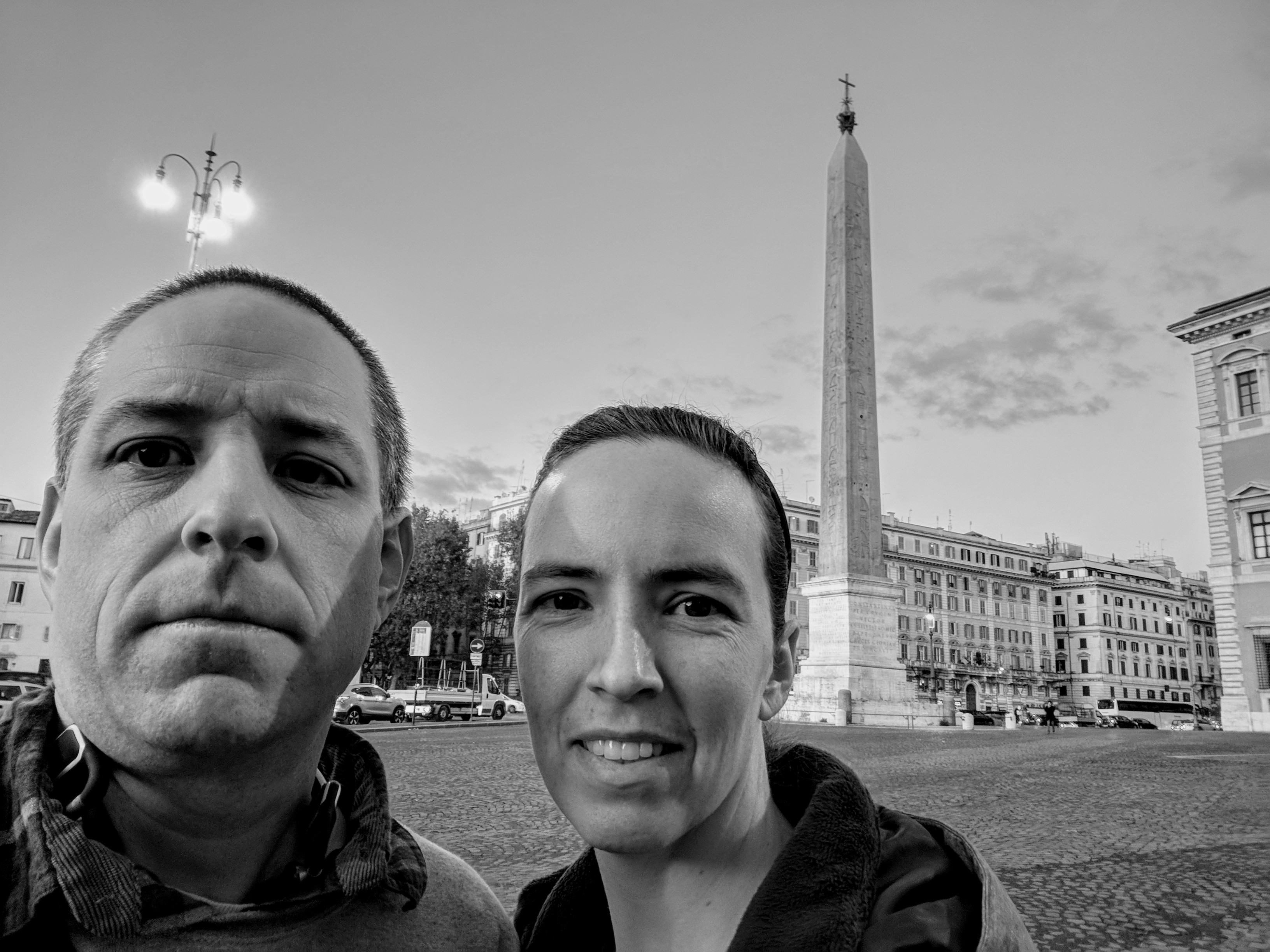
Archbasilica of Saint John Lateran is the Cathedral of the Pope as the Bishop of Rome, and as such, ranks even higher than St. Peter’s Basilica. Standing in this Piazza, technically we are in a Vatican Enclave and no longer in Italy.
Inside the little white tent structure are Vatican Police performing security. The non-Vatican Churches in Rome are amazing, but the Vatican Churches are all absolutely over-the-top.
In terms of the Roman Catholic Church, this spot is kind of where it all began, with a history that goes back to Emperor Constantine, and a Roman history that back even farther. Constantine made Christianity the official Religion of the Roman Empire.
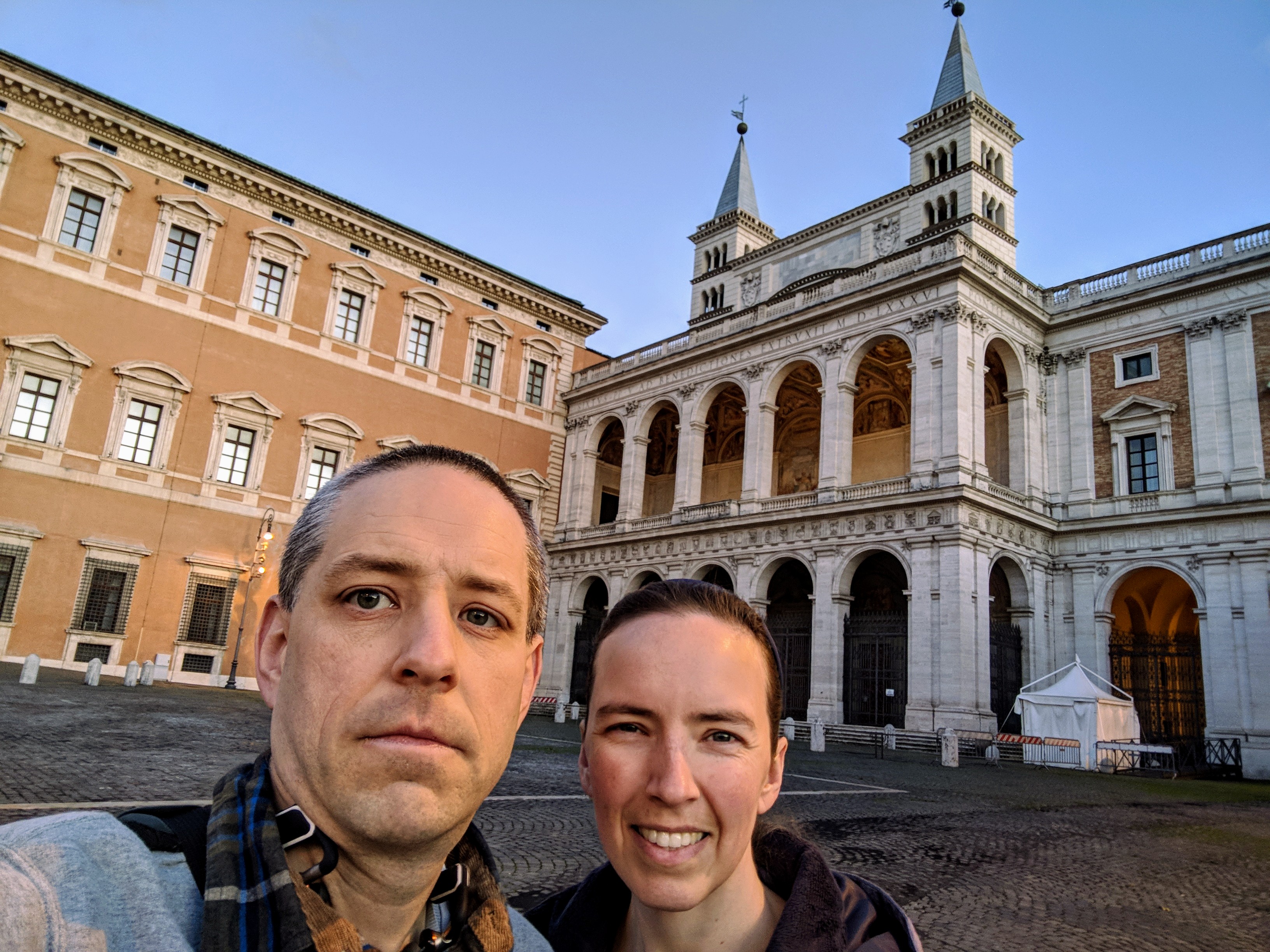
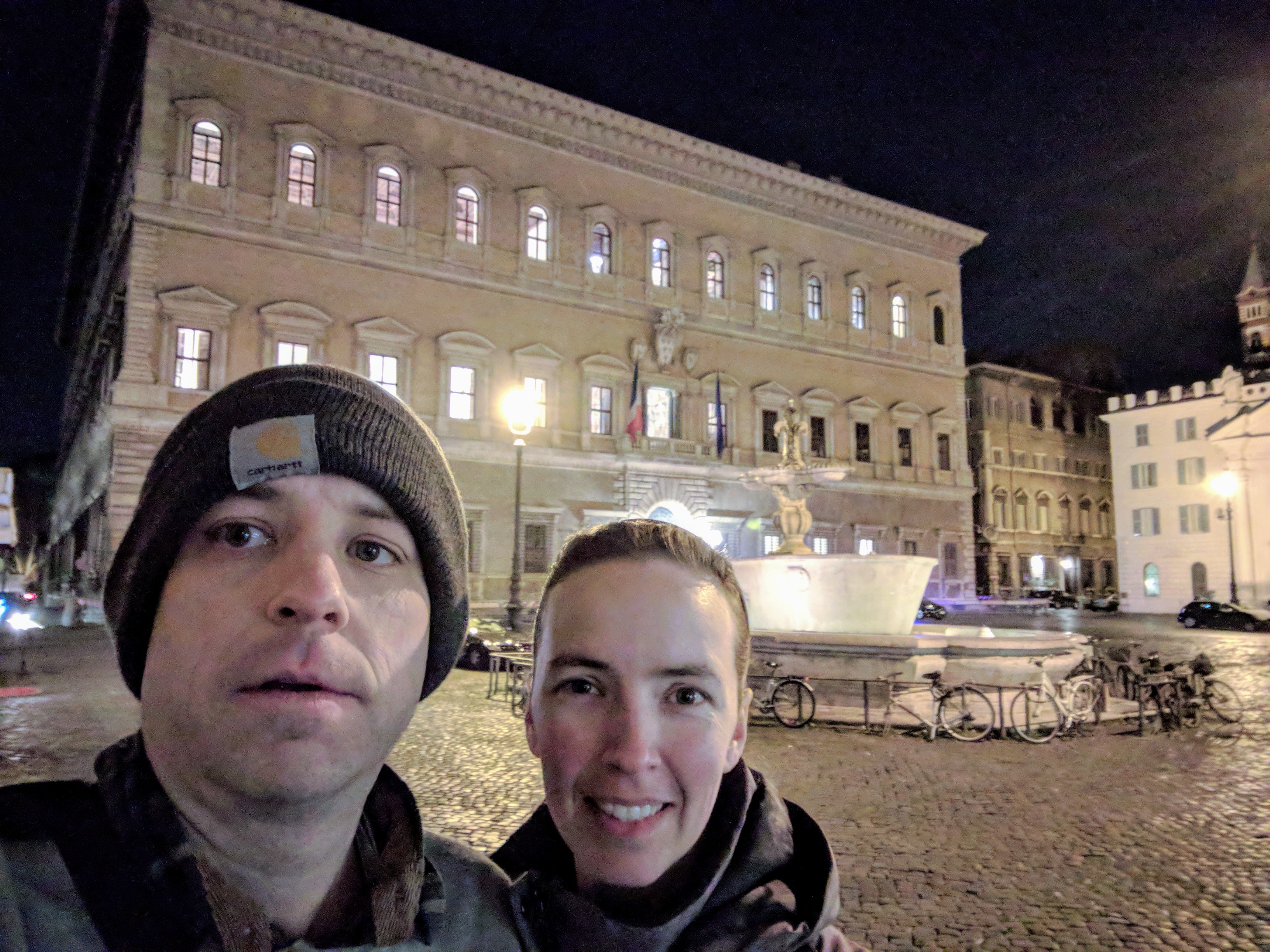
Palazzo Farnese houses the French Embassy, the facade was partly designed by Michelangelo.
The tubs were excavated from the Baths of Caracalla by Pope Paul III, who was a Farnese.
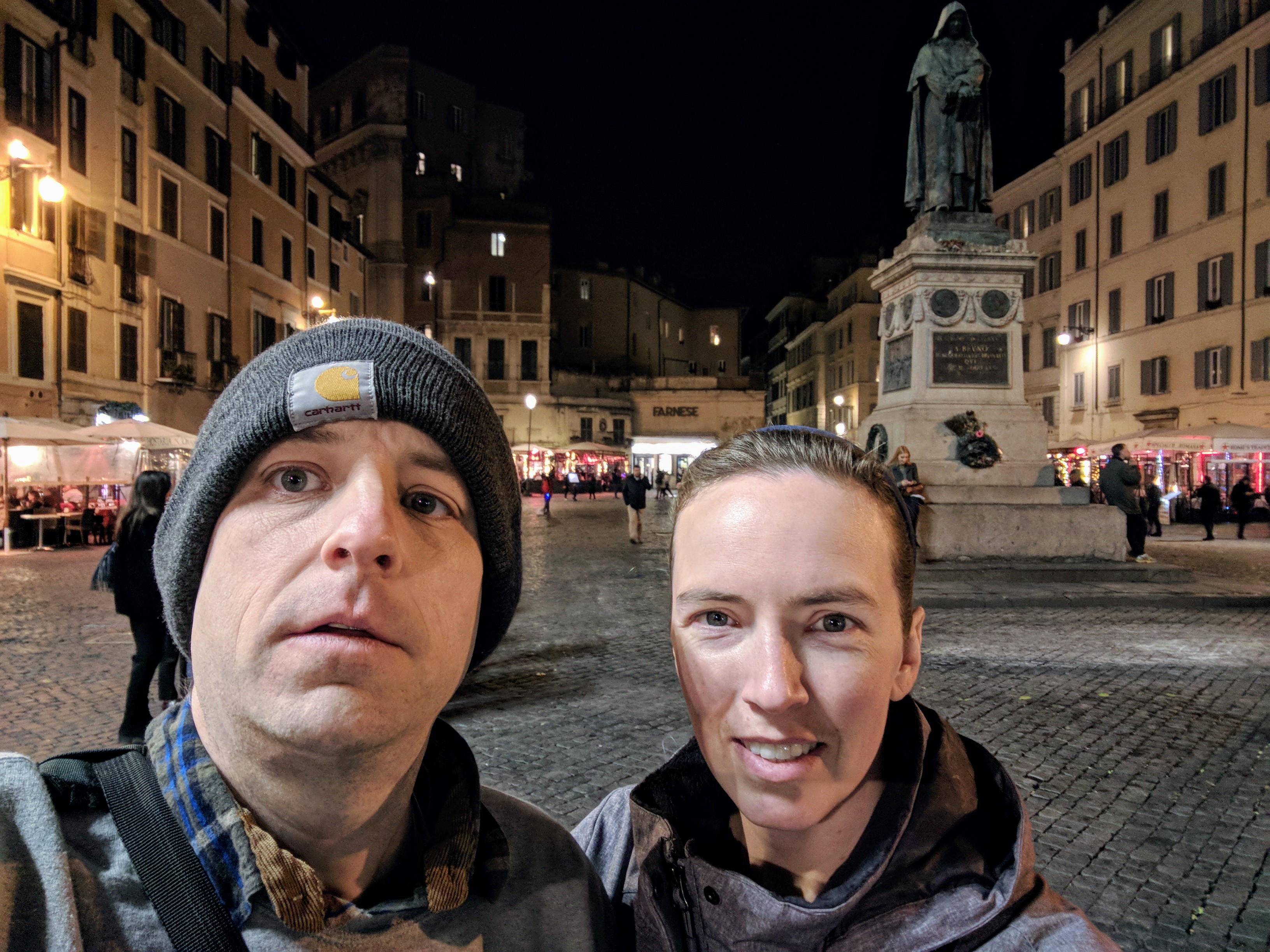
Campo de’ Fiori, or Field of Flowers, was a field where Vatican Pilgrims were allowed to camp. The statue honors Giordano Bruno, who was burned here as heretic in 1600.
The east end of the square (to our backs) faces apartments that are built into, and on top of the ruins of the Theatre of Pompey where Julius Caesar was assassinated.
We can see how electrified is Mrs Trent, by the presence of such dramatic history!